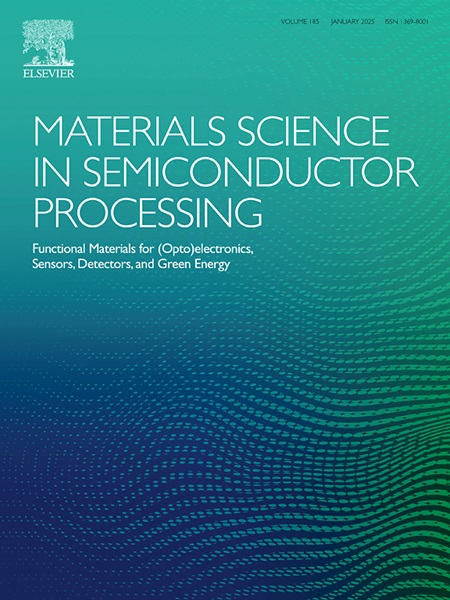Ultra-low temperature ozone annealing for decreasing sub-threshold swing of oxide thin film transistors
IF 4.2
3区 工程技术
Q2 ENGINEERING, ELECTRICAL & ELECTRONIC
引用次数: 0
Abstract
An effective approach is presented in this study to reducing the sub-threshold swing (SS) of indium gallium zinc oxide thin film transistors (IGZO-TFTs) through ultra-low temperature ozone (O3) annealing. The O3-annealed temperature is varied to systematically investigate its impact on electrical properties of IGZO thin films and IGZO-TFT compared with as-deposited IGZO thin films and devices. The results reveal a notable decrease in oxygen vacancy concentration in the O3-annealed films. Meanwhile, the density of the interface trap state (Nt) is decreased and shows an inverse correlation with increasing O3-annealed temperature. When the IGZO-TFT O3-annealed at 75 °C, it exhibits satisfactory electrical properties, with a SS decreased into 140 mV/decade, a saturation mobility (μsat) is maintained at 4.2 cm2/V·s, a threshold voltage (Vth) of 0.7 V and an Ion/Ioff of 8.6 × 108. Finally, the high-power impulse magnetron sputtering (HiPIMS) IGZO-TFT through ultra-low temperature O3 annealing at 75 °C for only 180 s, exhibits a low SS. This study provides favorable conditions for the application of IGZO-TFTs that demand ultra-fast response, especially under low-temperature conditions.

超低温臭氧退火降低氧化薄膜晶体管亚阈值摆动
本文提出了一种通过超低温臭氧(O3)退火来降低铟镓锌氧化物薄膜晶体管(IGZO-TFTs)亚阈值摆动(SS)的有效方法。改变o3退火温度,系统地研究其对IGZO薄膜和IGZO- tft电学性能的影响,并与沉积的IGZO薄膜和器件进行比较。结果表明,o3退火膜中氧空位浓度明显降低。同时,界面阱态密度(Nt)随o3退火温度的升高而减小,并呈负相关。当IGZO-TFT - o3在75℃退火时,表现出满意的电学性能,SS降至140 mV/decade,饱和迁移率(μsat)维持在4.2 cm2/V·s,阈值电压(Vth)为0.7 V, Ion/Ioff为8.6 × 108。最后,高功率脉冲磁控溅射(HiPIMS) IGZO-TFT经过75°C的超低温O3退火仅180 s,显示出较低的SS。本研究为要求超快速响应的IGZO-TFT的应用,特别是在低温条件下的应用提供了有利条件。
本文章由计算机程序翻译,如有差异,请以英文原文为准。
求助全文
约1分钟内获得全文
求助全文
来源期刊

Materials Science in Semiconductor Processing
工程技术-材料科学:综合
CiteScore
8.00
自引率
4.90%
发文量
780
审稿时长
42 days
期刊介绍:
Materials Science in Semiconductor Processing provides a unique forum for the discussion of novel processing, applications and theoretical studies of functional materials and devices for (opto)electronics, sensors, detectors, biotechnology and green energy.
Each issue will aim to provide a snapshot of current insights, new achievements, breakthroughs and future trends in such diverse fields as microelectronics, energy conversion and storage, communications, biotechnology, (photo)catalysis, nano- and thin-film technology, hybrid and composite materials, chemical processing, vapor-phase deposition, device fabrication, and modelling, which are the backbone of advanced semiconductor processing and applications.
Coverage will include: advanced lithography for submicron devices; etching and related topics; ion implantation; damage evolution and related issues; plasma and thermal CVD; rapid thermal processing; advanced metallization and interconnect schemes; thin dielectric layers, oxidation; sol-gel processing; chemical bath and (electro)chemical deposition; compound semiconductor processing; new non-oxide materials and their applications; (macro)molecular and hybrid materials; molecular dynamics, ab-initio methods, Monte Carlo, etc.; new materials and processes for discrete and integrated circuits; magnetic materials and spintronics; heterostructures and quantum devices; engineering of the electrical and optical properties of semiconductors; crystal growth mechanisms; reliability, defect density, intrinsic impurities and defects.
 求助内容:
求助内容: 应助结果提醒方式:
应助结果提醒方式:


